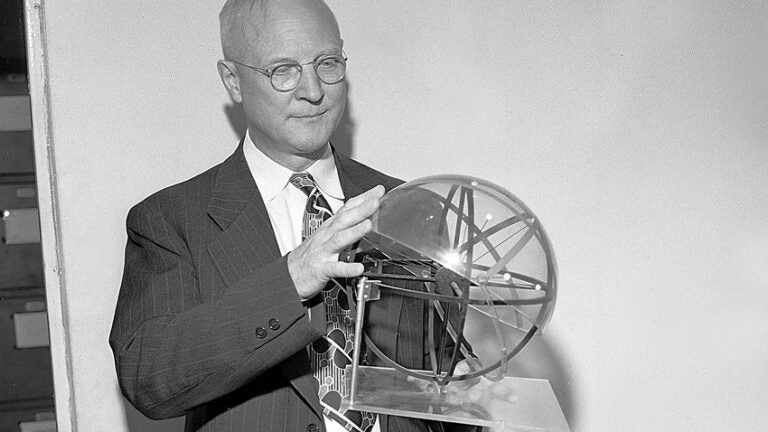
Late professor’s revolutionary model of intelligence valued creativity, critical thinking
For those of us who flounder while trying to calculate a tip or parallel park — but flourish when asked to write a poem or analyze a painting — we have Joy Paul “J.P.” Guilford to thank for validating our not-so-obvious intellectual strengths.
The late Guilford, who joined USC Dornsife as a professor of psychology in 1940, is the architect of the “Structure of Intellect” (SOI) theory, which proposes a three-dimensional model of intelligence. This schema, which gained renown among psychologists and educators, even now could help policymakers as they refine the nation’s educational system.
Recently, a number of elected officials have ignited initiatives to move students away from declaring traditional liberal arts majors — such as philosophy or French literature — in favor of more technical subjects, such as engineering or math. The plan is to provide more public dollars to students who major in subjects that provide skills, rather than knowledge.
As quoted in The New York Times, Debra Humphreys, a senior vice president at the Association of American Colleges and Universities, expressed concern that underfunding humanities belittles the elements of human intelligence that Guilford worked to legitimize — such as creative and strategic thinking abilities.
“We are not good at predicting what jobs are going to be required in five years and 10 years down the road,” she said in the Times article, mentioning research by the association that indicates potential employers are less focused on individual majors than they are on the kind of broad-based analytic, communication and problem-solving skills that a humanities education specializes in.
Indulging his curiosity
Guilford noticed the potential hidden in these less-celebrated abilities from the time he was a child. Having grown up comparing his own brothers’ unique skills and abilities, Guilford was curious about what, exactly, defines intelligence?
Before Guilford published his work, the Intellectual Quotient (I.Q.) stood as the gold standard for quantifying human intelligence. Guilford questioned that system — perplexed by how a linear model of intelligence testing could be accurate when peoples’ intellectual strengths vary so tremendously.
Before joining the USC Dornsife Department of Psychology, Guilford served as interim director of the psychology clinic at the University of Nebraska. There he administered intelligence tests to children.
“He had always believed that there are many important and relatively independent mental abilities,” wrote Andrew L. Comrey in his biographical memoir of Guilford (National Academy of Sciences, 1993). “Guilford was particularly aware of the absence of creativity measures in traditional intelligence testing.”
During his tenure at USC Dornsife from 1940 to 1962, Guilford refined the SOI model, which he presented formally in Paris in 1955. The current theory comprises more than 180 intellectual abilities organized along three dimensions — operations, content and products.
The operations dimension includes cognition, memory retention and evaluation. Content is concerned with semantic and behavioral aptitude, such as one’s facility with language and one’s ability to pick up on behavioral cues. The processing dimension contains results of applying operations to contents — such as one’s ability to make predictions or anticipate consequences.
Learning to be smart?
As Guilford continued to uncover new distinct mental abilities, he became convinced that children could be trained to be smarter. He coined the motto, “Intelligence education is intelligent education.” Guilford’s ideas have been implemented, particularly in Japan, through an education system that emphasizes critical thinking and creativity.
Guilford’s theory has also been applied by USC graduate researcher in education Mary N. Meeker, who collaborated closely with Guilford. Even now, SOI learning materials are used in addressing learning disabilities in early childhood education and in screening students for admission to gifted and special education programs.
“When Guilford began his career, intelligence was the IQ, a monolithic table,” wrote Comrey. “Now, in large measure as a result of his research, intelligence has been shown to be incredibly complex.”
In 2016, the intricacy of human intelligence is not up for dispute — but how we value different skill sets most definitely is.
Studies have shown that hereditary limitations placed on human intelligence are less restrictive than previously assumed, Comrey wrote. “Guilford’s concept of intelligence, if adequately heeded, will have a profound impact in the future on public perceptions about individual potential and upon the education of children.”
As American policymakers work to fix a national education system that consistently fails to compete with many countries in Asia and Europe — Guilford’s seminal research provides a ray of hope.
The potential is there. Now, our challenge is finding a way to access it.